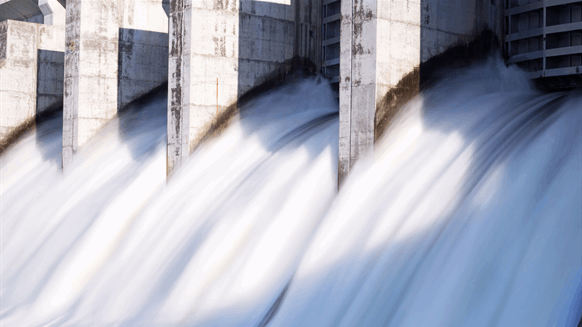The US Department of Energy (DOE) has awarded $13 million in funding for research and development (R&E) projects to enable existing dams to generate electricity and accelerate the deployment of hydroelectric storage by pumping (PSH).
“The funding supports organizations to accelerate hydropower research and development for non-motorized dam and PSH technologies to make them more affordable, environmentally responsible and deployable,” the DOE said in a recent press release.
Of the more than 90,000 dams in the US, less than three percent produce power, he noted. “These dams serve a variety of purposes, from flood control and irrigation to water storage and recreation and represent the potential to add thousands of megawatts of clean energy to the grid,” he said the department
Meanwhile, PSH, which currently accounts for 93 percent of the nation’s utility-scale energy storage, “will be a key tool for balancing a grid with an increasing amount of variable resources such as wind and solar.” , he said.
“For more than a century, Americans have harnessed the power of water to electrify our communities, and it is a critical source of renewable energy that will help us achieve our climate goals,” said Secretary of Energy Jennifer M. Granholm in a statement.
“President Biden’s Investing in America agenda will help expand the use of hydropower, increasing access to affordable and clean energy and creating good-paying jobs.”
The largest portion of the grant, $4 million, has gone to RCAM Technologies for an offshore PSH technology, which would reduce “some of the siting and permitting challenges that have hindered the growth of PSH,” said the DOE
The grant “will advance RCAM Technologies’ offshore pumped hydroelectric storage system toward commercialization by funding the device through design, manufacturing and deep-water ocean testing in the Port of Los Angeles,” the department said. The solution being developed by Boulder, Colo.-based RCAM works by storing seawater under pressure on the seafloor that, when released, spins a turbine and generates power, according to the DOE.
Georgia Power Co. has received $2,880,191 for its work on “a utility-scale solution to adapt traditional hydro facilities to serve as PSH facilities.” The solution is to be demonstrated at the Bartlett’s Ferry Hydroelectric Facility in Salem, Alabama.
Meanwhile, the Electric Power Research Institute will test two models of the Amjet turbine system, for which it has received $2,306,949. To be tested at the Keokuk Energy Center, a hydroelectric plant in Iowa, the system uses a turbine designed for non-motorized dams, the DOE said.
Quidnet Energy Inc. has received $2,084,165 to “demonstrate the feasibility of a new PSH technology that stores pressurized water underground,” the DOE said.
“This low-cost form of long-term electricity storage uses existing wells, providing an opportunity to reuse legacy oil and gas assets.”
Emrgy Inc. has received $1,600,308 for the development of “a turbine to generate hydraulic power in non-motorized dams where the water drop is less than 30 feet or in low-flow conduits, such as existing irrigation canals.” The turbine will be on display in the South Columbia Basin, according to the DOE.
Awarded $243,540, Drops for Watts aims to create a modular, low-impact system to enable power generation from existing irrigation infrastructure without requiring any additional excavation.
For a digital twin monitoring solution, Turbine Logic has secured $199,435. The project is “a virtual representation of existing instrumentation, to better predict the common maintenance needs of hydroelectric turbines.”
To contact the author, please email jov.onsat@rigzone.com


